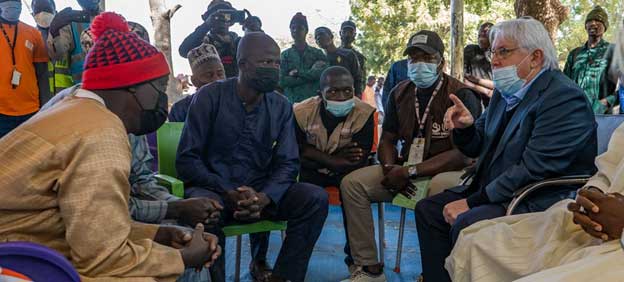[ad_1]
On the COP26 local weather convention final yr, Vietnam’s Prime Minister Pham Minh Chính unexpectedly introduced a goal of reaching internet zero by 2050. The nation additionally signed the International Coal to Clear Energy Transition assertion, by which it dedicated to quickly scale up renewables and construct no extra new unabated coal energy crops.
This can be a main and surprising pivot for Vietnam. The nation has invested closely in coal energy over the previous decade and has probably the most put in coal capability amongst Mekong nations, after China. Simply two months earlier than COP26, the federal government launched Vietnam’s eighth energy improvement plan (PDP8) which coated 2021–2030 and relied closely on international funding in non-renewable power. The PDP8 would have doubled coal energy capability by 2030, with extra to come back within the 5 years after that.
After its COP26 bulletins, the federal government requested the Ministry of Trade and Commerce to revise the PDP8, although an up to date draft is but to be launched.
By 2020, Vietnam’s coal energy fleet was producing as a lot power as all different energy sources mixed. In that yr, the sector emitted about 126 million tonnes of CO2, or round half of Vietnam’s emissions. The nation’s emissions have elevated lately, as these of its neighbours have principally remained flat or fallen.
Brian Eyler, Southeast Asia director of the Stimson Heart, a US thinktank, explains that as Vietnam exports extra manufactured items than its neighbours, sources of electrical energy era wanted to be developed extra shortly, and coal and hydropower had been “the straightforward options”.
Round 2010, Vietnam stopped constructing large dams, as a substitute favouring coal energy, when it launched its seventh energy improvement plan (PDP7) for 2011–2020. “The Ministry of Trade and Commerce judged that the hydro potential had been all however tapped, in order that they switched the main target to coal,” stated Tran Dinh Sinh, a technical marketing consultant for GreenID, a Vietnamese environmental NGO. “The newest draft [September 2021] of the PDP8 additionally confirmed 51 gigawatts (GW) of coal in 2030, so PDP8 is the continuation of PDP7. However [the ministry] should not explaining why they’re doing this.”
Analysis commissioned in 2017 by the Friedrich Ebert Basis, a German non-profit organisation, discovered that institutionalised conflicts of curiosity had been a barrier to Vietnam’s transition from coal to low-carbon sources, an commentary echoed by Eyler. “It’s laborious to persuade corporations who construct coal crops to not do it. They’ve a variety of energy and particular curiosity teams,” he explains, including that the balancing of pursuits within the PDP revision course of has felt like a boxing match. “At some point the coal persons are again on the ropes, and the following day they’re preventing laborious. It’s simply forwards and backwards, forwards and backwards.”
Funding drying up
Knowledge from International Vitality Monitor present that since 2010 Vietnam’s coal sector has obtained at the very least US$29 billion in international funding. The Stimson Heart’s Mekong Infrastructure Tracker tells an analogous story of reliance on international cash to construct coal crops: for each 100 MW of coal capability in operation proper now, 93 MW had been constructed with some international funding.
“Coal was the most cost effective and quickest approach to meet Vietnam’s electrical energy wants. And there was simple funding obtainable,” stated James Browning, the communications director of International Vitality Monitor.
China, Japan and South Korea was the primary traders in Vietnam’s coal sector however have now backed away. Even earlier than Vietnam’s announcement at COP26, questions had been being raised about how the PDP8 could be funded. In keeping with the September draft, Vietnam would want roughly US$44 billion to develop its coal fleet over the following 10 years, or roughly 50% greater than all of the international funds which have flowed into the sector up to now decade – a rise that appears unlikely within the new panorama of coal finance.
Doubt has due to this fact been solid on the feasibility of the PDP’s projections. After President Xi Jinping introduced final September that China would cease constructing new abroad coal initiatives, the Institute for Vitality Economics and Monetary Evaluation revealed a short. It concluded that, given the flip away from financing coal by Asian and North American governments and banks, of the extra 30 GW of coal energy deliberate in PDP8, solely a 3rd remains to be possible. This covers initiatives already in development or with funding secured.
Human prices and backlash
Analysis revealed in 2017 on the burden of illness arising from coal energy in Southeast Asia estimated that if all of the coal crops in PDP7 had been constructed by 2030, then Vietnam would face nearly 20,000 further deaths that yr because of the ensuing air air pollution.
Burning coal releases fly ash, which is plentiful in tiny particulates. When inhaled, these can result in coronary heart illness, lung and throat cancers and respiratory ailments.
There may be, as but, restricted knowledge regarding how damaging Vietnam’s coal crops are to surrounding communities. In an effort to fill this hole, Nguyen Trong An, a paediatrician on the Heart for Well being Setting Analysis and Growth (CHERAD) in Hanoi, travelled with a workforce to Vinh Tan commune on the nation’s southeast coast in March 2021. The realm is residence to 3 operational coal crops, with one other below development.
The workforce wished to assemble info from medical logbooks at native well being stations in Vinh Tan and close by commune Phuoc The. In Vinh Tan, the authorities didn’t provide unique paperwork, claiming that the bookkeeper was away; An stated the workforce plan to return this yr to analyze additional. At Phuoc The, he claims to have discovered that from 2010 to 2020 the speed of loss of life from most cancers and stroke was increased than anticipated. Earlier than the coal crops had been inbuilt 2010, for each 100 deaths, 33 had been attributable to noncommunicable ailments akin to most cancers and coronary heart assault. By 2020, this had risen to 70 in 100.
A correlation could be seen, however An says they might not be the one reason for the upper mortality charges and the findings will have to be corroborated with additional research this yr.
Regardless of a scarcity of localised knowledge on the gasoline’s dangerous well being impacts in Vietnam, some residents have already turned in opposition to coal crops. Of the 54 coal energy initiatives that International Vitality Monitor tracks within the nation, eight have recorded protest or opposition. Native residents within the neighborhood of the Duyen Hai energy station have complained that the removing of sand dunes to construct a coal port has elevated the incidence of flooding, landslides and soil erosion. In the meantime, the discharge of heated water from the Quang Ninh energy plant has brought on mass die-offs of fish and shrimp, destroying the livelihoods of a whole lot of households.
Adapting to international shifts
On the finish of November, MoIT stated that by 2045, cleaner power together with fuel, photo voltaic and wind will account for about 75% of Vietnam’s whole put in producing capability.
Nevertheless, many specialists don’t take into account fuel a “clear power”. Browning factors out that, within the quick time period, the plentiful methane launched throughout fuel extraction and combustion is 80 occasions worse than CO2 by way of its warming impact. International Vitality Monitor launched a report in October 2021 saying that if all deliberate fuel infrastructure in Asia is constructed then the aim of limiting international warming to 1.5C is unlikely to be met.
Vietnam’s renewable power sector’s potential is booming. The draft PDP8 predicts that in 2030 the nation will want 92 GW of electrical energy. To fulfill that demand, the nation should develop its power construction by 18 GW in 9 years, or 2 GW per yr. In 2020, wind energy alone grew by 4 GW, and in 2019, photo voltaic capability elevated by 16 GW.
“Vietnam could make a transition away from these beforehand forecast coal crops,” stated Eyler. “The largest alternative lies in offshore wind. We may see a really comparable growth in wind as we noticed in photo voltaic within the final two years.”
He added: “I feel the China dedication [to stop overseas coal projects] will produce outcomes, and that might work to alter the way in which that these [coal] teams take into consideration the long run. As a result of we’ve seen, like within the US, the massive oil and fuel corporations, they’re constructing photo voltaic now. They’ll make the transition.”
[ad_2]
Source link



/cloudfront-us-east-1.images.arcpublishing.com/gray/GNN7GHUPT5FFXGEE5AAHTK2LRY.jpg)










